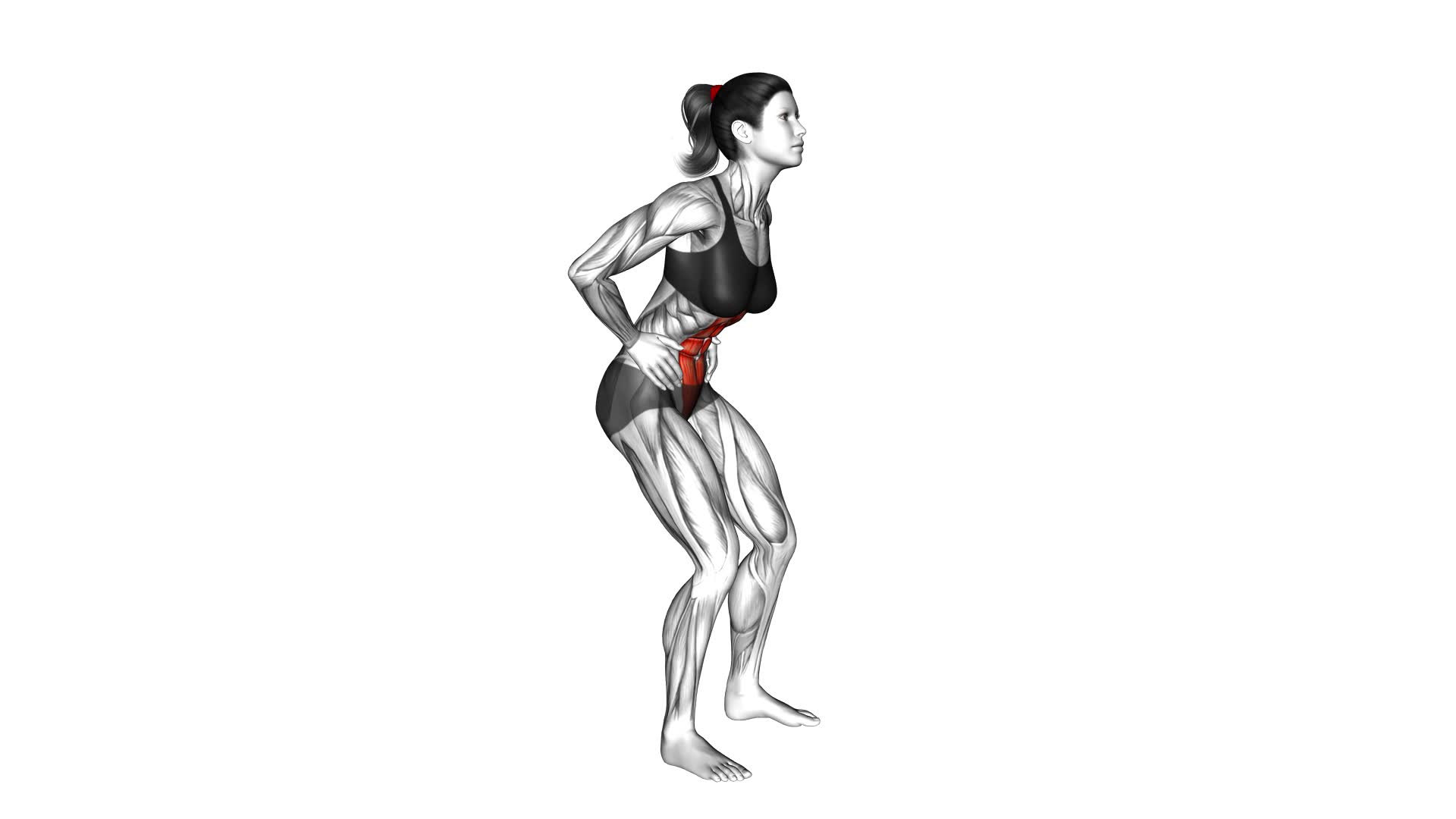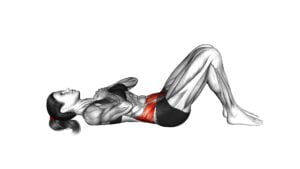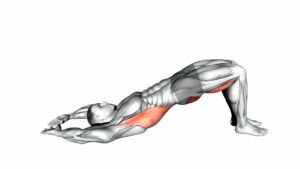Standing Pelvic Tilt (female) – Video Exercise Guide & Tips

Are you looking for an effective exercise to strengthen your pelvic muscles? Look no further than the Standing Pelvic Tilt.
Watch This Exercise Video
In this video exercise guide, we'll show you the proper form and technique, as well as common mistakes to avoid.
Whether you're a beginner or an experienced individual, we've got modifications and advanced variations for you.
Get ready to incorporate the Standing Pelvic Tilt into your workout routine and enjoy the benefits it brings.
Let's get started!
Key Takeaways
- The standing pelvic tilt strengthens muscles and improves flexibility in the pelvic region.
- It engages lower back, abdomen, and pelvis muscles to strengthen the core and improve stability.
- The exercise targets glute muscles for toning and shaping the buttocks.
- It alleviates lower back pain, improves posture, prevents muscle imbalances, and enhances athletic performance.
Benefits of the Standing Pelvic Tilt
You can experience several benefits from regularly performing the standing pelvic tilt exercise.
This exercise is highly effective in strengthening muscles and improving flexibility in your pelvic region. By engaging the muscles in your lower back, abdomen, and pelvis, you can strengthen your core and improve your overall stability.
The standing pelvic tilt also targets the glute muscles, helping to tone and shape your buttocks.
Additionally, this exercise can help alleviate lower back pain and improve your posture. The pelvic tilt motion stretches the muscles in your lower back, hamstrings, and hips, increasing their flexibility and reducing the risk of injury.
By incorporating the standing pelvic tilt into your regular fitness routine, you can prevent muscle imbalances and enhance your athletic performance.
As you continue to read, you'll learn about the proper form and technique for performing this exercise to maximize its benefits.
Proper Form and Technique
To maintain proper form and technique for the standing pelvic tilt exercise, it's important to focus on engaging your core muscles while performing the movement. This exercise is a great way to strengthen your core and improve your pelvic floor health.
When executing the standing pelvic tilt, start by standing with your feet hip-width apart and your knees slightly bent. Place your hands on your hips.
To begin the movement, tilt your pelvis forward, as if you're trying to tuck your tailbone under. As you do this, engage your abdominal muscles and squeeze your glutes. Hold this position for a few seconds, then return to the starting position. Repeat the movement for the desired number of repetitions.
It is important to maintain proper alignment throughout the exercise. Keep your shoulders relaxed and avoid arching your lower back excessively. Focus on using your core muscles to initiate the movement, rather than relying on momentum.
Common Mistakes to Avoid
To ensure proper hip alignment during the standing pelvic tilt exercise, avoid arching your lower back or tucking your pelvis under too much.
Keep your pelvis in a neutral position and engage your core muscles to support the movement.
Remember to maintain a stable and controlled motion throughout the exercise to maximize its effectiveness.
Proper Hip Alignment
To ensure proper hip alignment during a standing pelvic tilt exercise, it's important to frequently check for common mistakes and make necessary adjustments. Proper hip alignment is crucial for maintaining hip mobility and promoting pelvic floor health.
One common mistake to avoid is allowing the hips to tilt too far forward or backward. This misalignment can put unnecessary strain on the lower back and pelvic region.
Another mistake to watch out for is collapsing or sinking into one hip, which can lead to imbalances and uneven weight distribution.
Additionally, be mindful of keeping the knees aligned with the hips, as any inward or outward rotation can affect the overall alignment of the hips.
Engaging Core Muscles
Engage your core muscles properly to avoid common mistakes during the standing pelvic tilt exercise. Engaging your core muscles is crucial for maintaining proper form and maximizing the benefits of this exercise. By activating your core, you improve abdominal strength and stability, which helps protect your lower back and maintain proper alignment throughout the movement.
To engage your core, start by drawing your belly button in towards your spine. This activates the deep abdominal muscles, including the transverse abdominis. Next, imagine gently pulling your ribcage towards your hip bones, creating a slight contraction in your obliques. Finally, engage your pelvic floor muscles by gently contracting the muscles that you'd use to stop the flow of urine.
Remember to maintain this engagement throughout the entire exercise, keeping your core muscles activated and your spine in a neutral position. By properly engaging your core, you can avoid common mistakes and achieve optimal results in improving abdominal strength.
Modifications for Beginners
Start with 5 repetitions of the standing pelvic tilt exercise to ease into the movement and build strength as a beginner. This exercise is a great way to engage your core muscles and improve your posture. As a beginner, it's important to start with modifications that suit your fitness level.
Here are some progressions for beginners to help you get started:
- Perform the exercise with your feet shoulder-width apart to provide a stable base of support.
- Place your hands on your hips to help you maintain proper alignment throughout the movement.
- Focus on the pelvic tilt motion by gently tilting your pelvis forward and backward. Remember to engage your core muscles as you perform the movement.
- Start with a smaller range of motion and gradually increase it as you become more comfortable with the exercise.
These modifications will allow you to gradually build strength and stability in your core muscles, preparing you for more advanced variations of the standing pelvic tilt exercise. Remember to listen to your body and modify the exercise as needed to avoid any discomfort or strain. Keep practicing and you'll soon see improvements in your posture and overall core strength.
Advanced Variations for Experienced Individuals
Once you have mastered the basic standing pelvic tilt exercise, you can progress to more challenging variations to further strengthen your core muscles. Advanced modifications and progressions will take your workout to the next level and help you achieve even greater results.
One advanced variation is the standing pelvic tilt with a resistance band. To perform this exercise, secure a resistance band around your thighs, just above your knees. Stand with your feet hip-width apart and engage your core muscles. Then, tilt your pelvis forward, focusing on the contraction of your abdominal muscles. Hold this position for a few seconds and then release. Repeat for the desired number of repetitions.
Another advanced modification is the standing pelvic tilt with a weight plate. Hold a weight plate against your lower abdomen while performing the pelvic tilt. This added resistance will challenge your core muscles even more. Remember to maintain proper form and control throughout each variation.
Incorporating the Standing Pelvic Tilt Into Your Workout Routine
To incorporate the standing pelvic tilt into your workout routine, you'll experience the benefits of core stability and improved balance. This exercise targets the muscles in your abdomen, lower back, and hips, helping to strengthen your core and improve your overall posture.
Core Stability and Balance
Improve your core stability and balance by incorporating the standing pelvic tilt into your workout routine. This exercise not only targets your pelvic and lower back muscles, but also enhances your coordination and overall balance. Here are four key benefits of including the standing pelvic tilt in your workout routine:
- Strengthening the lower back: By engaging the muscles in your lower back, this exercise helps to build strength and stability in this area, reducing the risk of injury and improving your posture.
- Enhancing core stability: The standing pelvic tilt activates your core muscles, including the abdominals and obliques, which are essential for maintaining stability and balance during movement.
- Improving coordination: This exercise requires control and coordination of your pelvic movements, helping to improve your overall coordination and body awareness.
- Balancing the pelvis: The standing pelvic tilt helps to align and balance your pelvis, which is crucial for maintaining proper posture and preventing imbalances that can lead to pain and discomfort.
Benefits for Posture
To improve your posture, incorporate the standing pelvic tilt into your workout routine to strengthen your lower back, enhance core stability, improve coordination, and balance your pelvis.
The standing pelvic tilt is an effective exercise that targets the muscles in your lower back, including the erector spinae and multifidus. By engaging these muscles, you can improve the flexibility of your lower back, which in turn can help correct any imbalances and alleviate pain caused by poor posture.
Additionally, the standing pelvic tilt can also strengthen your core muscles, such as the transverse abdominis and obliques, which are essential for maintaining proper alignment and stability.
When performed correctly and consistently, this exercise can have a significant impact on your posture, helping you stand taller and with better alignment.
Frequently Asked Questions
How Often Should I Perform the Standing Pelvic Tilt Exercise?
To get the most out of the standing pelvic tilt exercise, you should perform it regularly. The frequency depends on your fitness level and goals.
For pregnant women, this exercise can provide numerous benefits such as improving posture and reducing lower back pain.
Beginners can modify the standing pelvic tilt by starting with smaller movements and gradually increasing the range of motion.
Remember to listen to your body and consult with a healthcare professional before starting any new exercise routine.
Can the Standing Pelvic Tilt Exercise Help Improve Posture?
The standing pelvic tilt exercise can indeed help improve your posture by benefiting your overall body alignment. By engaging your core muscles during this exercise, you're able to strengthen and stabilize your spine, which is essential for maintaining proper posture.
It helps to correct any imbalances in the pelvis and lower back, promoting a more aligned and upright posture. Regularly performing this exercise can contribute to better posture and reduce the risk of developing postural imbalances and related issues.
Is It Normal to Feel Discomfort or Mild Pain During the Standing Pelvic Tilt Exercise?
Feeling discomfort or mild pain during the standing pelvic tilt exercise isn't uncommon. It's important to listen to your body and modify the exercise if needed.
Common mistakes in performing the standing pelvic tilt include over-arching the lower back or using excessive force. Take it slow and focus on engaging your core muscles while maintaining proper alignment.
Can the Standing Pelvic Tilt Exercise Help With Lower Back Pain?
The standing pelvic tilt exercise can be beneficial for women's health, particularly in relieving lower back pain. By engaging your core properly during this exercise, you can strengthen the muscles that support your lower back and improve its stability.
This exercise helps to realign your pelvis, reducing stress on your lower back and promoting better posture. It's important to follow the proper technique and engage your core muscles to maximize the benefits of this exercise.
Are There Any Specific Breathing Techniques I Should Follow While Performing the Standing Pelvic Tilt Exercise?
When performing the standing pelvic tilt exercise, it's important to follow specific breathing techniques to ensure proper form and maximize effectiveness.
By focusing on your breath, you can enhance the mind-body connection and engage the correct muscles.
Take a deep breath in through your nose and exhale through your mouth as you tilt your pelvis forward or backward.
This controlled breathing will help you maintain stability and alignment throughout the exercise.
Conclusion
Incorporating the standing pelvic tilt into your workout routine can offer numerous benefits. By maintaining proper form and technique, you can improve your core stability, posture, and overall strength.
It's important to avoid common mistakes and gradually progress to advanced variations for experienced individuals. Whether you're a beginner or more experienced, this exercise can be modified to suit your fitness level.
Make sure to consult with a fitness professional for personalized guidance.

Author
Years ago, the spark of my life’s passion ignited in my mind the moment I stepped into the local gym for the first time. The inaugural bead of perspiration, the initial endeavor, the very first surge of endorphins, and a sense of pride that washed over me post-workout marked the beginning of my deep-seated interest in strength sports, fitness, and sports nutrition. This very curiosity blossomed rapidly into a profound fascination, propelling me to earn a Master’s degree in Physical Education from the Academy of Physical Education in Krakow, followed by a Sports Manager diploma from the Jagiellonian University. My journey of growth led me to gain more specialized qualifications, such as being a certified personal trainer with a focus on sports dietetics, a lifeguard, and an instructor for wellness and corrective gymnastics. Theoretical knowledge paired seamlessly with practical experience, reinforcing my belief that the transformation of individuals under my guidance was also a reflection of my personal growth. This belief holds true even today. Each day, I strive to push the boundaries and explore new realms. These realms gently elevate me to greater heights. The unique combination of passion for my field and the continuous quest for growth fuels my drive to break new ground.







